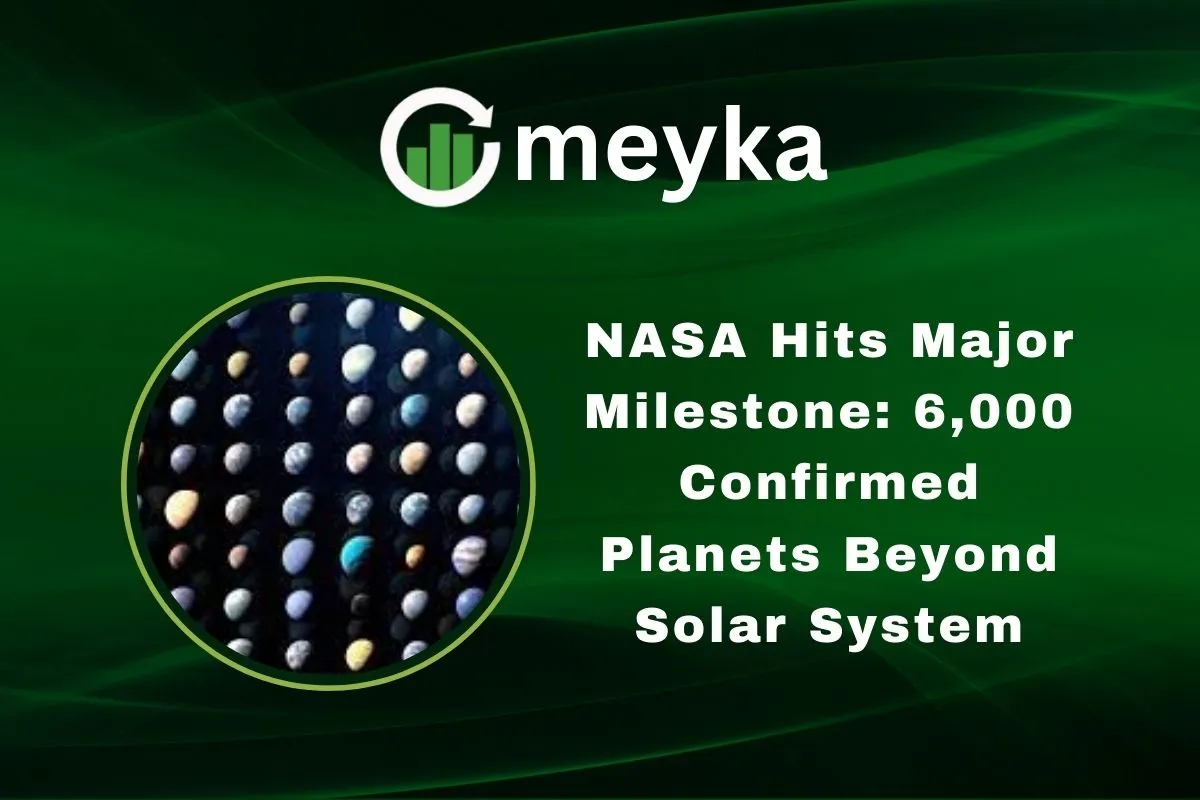NASA Hits Major Milestone: 6,000 Confirmed Planets Beyond the Solar System
It’s official: NASA has now confirmed 6,000 exoplanets, planets outside our solar system. We’ve made this leap in just over thirty years since the first planet around a Sun-like star was verified in 1995. We’ve watched the night sky change. Each discovery adds more worlds, some small and rocky, some giant and gaseous, many unlike anything we ever imagined. Many are still just candidates, but confirming them takes care and time.
By reaching 6,000 confirmed exoplanets, we mark more than just a number. We mark the power of persistence, new technologies, and global scientists working together. This milestone brings us closer to answering one of the biggest questions: Are we alone in the universe?
How We Got Here: The Journey to 6,000
- In the early 1990s, scientists discovered exoplanets around pulsars and evolved stars. These were strange worlds compared to our own.
- The real turning point came in 2009 with NASA’s Kepler mission. It scanned thousands of stars searching for tiny dips in light caused by planets passing in front of them. That transit method led to thousands of discoveries.
- Later missions like TESS (Transiting Exoplanet Survey Satellite) widened the search to nearly the whole sky. Ground-based telescopes and newer instruments have helped confirm more planets, measure their masses, or observe their atmospheres.
What Counts as a “Confirmed Planet”?
- A “candidate” exoplanet becomes “confirmed” when multiple lines of evidence support its existence. We often need repeated observations, sometimes with different telescopes.
- Methods include the transit method (light dips), radial velocity (star’s slight wobbles), direct imaging (rare, when we can see the planet itself), and others like gravitational lensing. Each has strengths and limits.
- False positives happen. Stellar activity or instrumental noise can mimic planet signals. Confirming means ruling those out.
Breakdown of the 6,000 Exoplanets
- Rocky planets (similar to Earth or Mars) appear often. Gaseous giants (like Jupiter, Saturn) are easy to spot, so many of those show up too. We see a wide variety.
- Strange ones surface: gas giants that orbit extremely close to stars (“Hot Jupiters”); planets orbiting two stars; rogue planets with no sun. Some are in orbits so tight they are tidally locked (one side always facing their star).
- Very young planets still forming in dusty disks around young stars have been directly imaged. For example, NASA’s archive recently listed WISPIT 2 b, a young planet caught in a gap in a protoplanetary disk. That shows we can see planets in the act of formation.
Why Exoplanet Discoveries Matter
- We learn about planet formation: what conditions favor rocky vs gas planets, what sorts of orbits are common, and how often multi-planet systems exist.
- We seek habitable worlds: planets that sit in the “habitable zone” (not too hot, not too cold), have potential atmospheres, water, and possibly life. Each exoplanet we confirm is a potential candidate.
- We see the bigger picture: by comparing many systems, we see how typical or unusual our Solar System is. It adds perspective on Earth’s place in the universe.
Spotlight on Earth-Like Worlds
- Among the 6,000, only a small fraction are Earth-sized and in habitable zones around Sun-like stars. These are the most interesting for life studies.
- Examples like TRAPPIST-1e are being studied for atmosphere composition and potential for liquids. Preliminary data suggest it might have a nitrogen‐rich atmosphere.
- Missions like the Habitable Worlds Observatory (proposed) and ESA’s PLATO (launching soon) will focus on finding more such planets.
Tools and Technology Behind the Discoveries
- Kepler laid the groundwork by discovering thousands of candidates using the transit method. Its data still helps us even after its mission ended.
- TESS continues the work, scanning bright nearby stars. It produces many candidates; follow-up observations (radial velocity, imaging) help confirm them.
- The James Webb Space Telescope (JWST) is beginning to directly image planets more effectively. One example is TWA 7b, a young, Saturn-mass, directly imaged in 2025.
- Data tools matter. The NASA Exoplanet Archive and other collaborative databases allow scientists everywhere to study and verify new planets.
Challenges in Exoplanet Discovery
- Many exoplanets are too faint or close to bright stars to see directly. The star’s light outshines them.
- Confirming candidate planets takes time, multiple observations, and strong instruments. False positives must be ruled out.
- Atmospheres are especially hard to study. We often measure only the size and orbit, not composition.
What’s Next After 6,000?
- New missions will sharpen our view. The Nancy Grace Roman Space Telescope (targeted launch 2027) will use microlensing to discover more distant exoplanets.
- ESA’s PLATO, CHEOPS, and ARIEL will study habitable zones, characterize atmospheres, and find more Earth-like planets.
- We expect thousands more candidate planets awaiting confirmation. With improved methods and technology, we will both raise the total and improve the quality of information about each world.
The Bigger Picture: Humanity’s Curiosity
We are asking timeless questions: Are we alone? What kinds of planets exist out there? Reaching 6,000 confirmed exoplanets shows that the universe is richer and more varied than we once thought. This milestone inspires many: students, scientists, and dreamers. It shows that with persistent effort, global cooperation, and steady advances in technology, we can explore far beyond our world. It reminds us that the cosmos is a place of promise, not just mystery.
Conclusion
NASA’s confirmation of 6,000 exoplanets is more than a number; it is a marker of progress. In just three decades, we moved from our first detection to thousands of known worlds. We still haven’t found “another Earth” yet, but we are closer than ever. Every new planet helps us map where habitable worlds might be and reveals how diverse planetary systems can become.
In the end, this journey is about discovery, wonder, and hope. It teaches us that while Earth is our home, the universe is vast and full of worlds we’re only beginning to understand.
FAQS:
No human has ever left the galaxy. We have only traveled to the Moon and sent spacecraft beyond our solar system, but never outside the Milky Way.
Scientists believe a hidden world, often called “Planet Nine,” may exist far beyond Neptune. It has not been found yet, but evidence suggests its strong pull.
So far, Earth is the only planet confirmed to have life. Mars once had water and may have supported tiny organisms, but clear proof is missing.
Disclaimer:
This content is for informational purposes only and is not financial advice. Always conduct your research.






